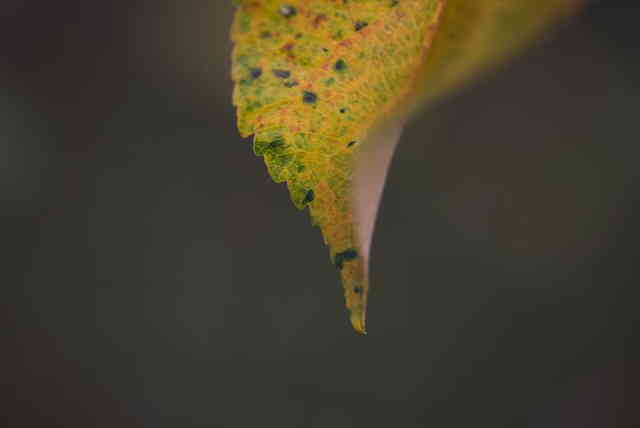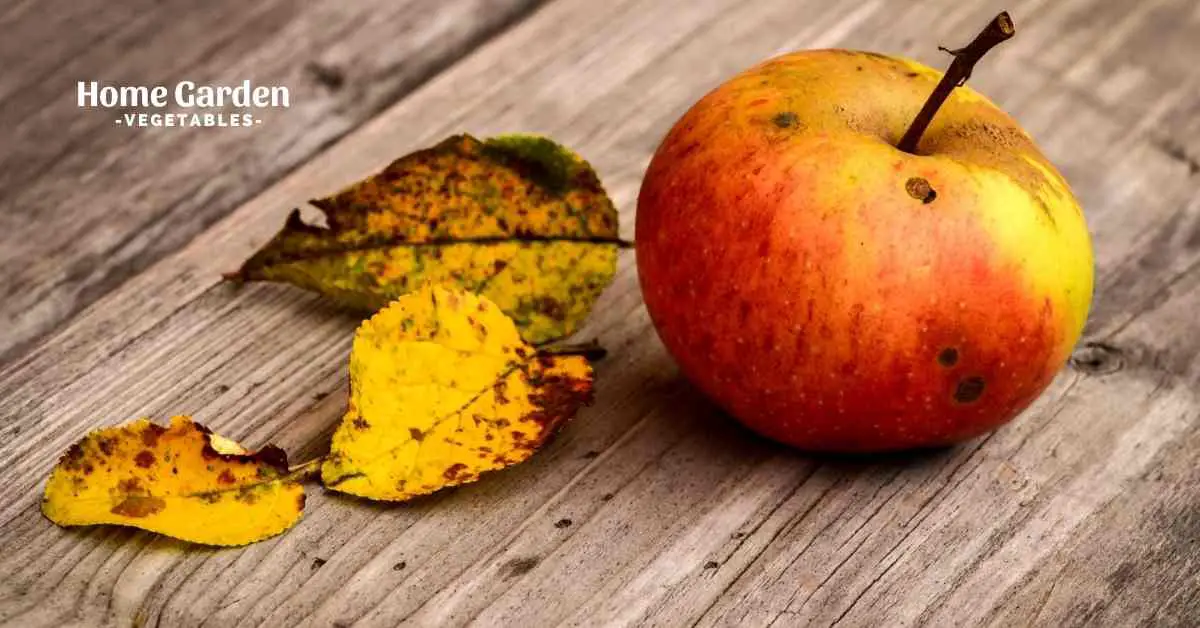There are a wide range of diseases that can affect apple trees, sometimes more than one at a time. If you’ve noticed yellow spots on your apple tree leaves, it could indicate any one of a variety of diseases or pest problems. It’s important to identify the problem correctly before starting the treatment. Continue reading and you’ll learn about all the major problems associated with this symptom.

Diseases That Cause Yellow Spots
The most obvious reason for yellow spots on apple tree leaves is some kind of disease. What kind of disease causes this symptom? Let’s discuss further.
Reader Poll: What online courses would interest you?
Cedar Apple Rust
Cedar apple rust is the most likely culprit of yellow spots on apple tree leaves. It’s common on apples and is caused by the fungal pathogen Gymnosporangium juniperi-virginianae. This strange pathogen requires two kinds of hosts to be present, typically within a mile of each other. It spends a portion of its life cycle on a juniper species tree, usually Eastern redcedar. Reddish brown galls develop on the new branches of the tree. With the onset of spring, the galls grow and spores develop within, only to be carried by wind to the surrounding apple and crabapple trees.
On their new hosts, i.e. apple trees, they cause the disease called cedar apple rust which is identified by circular yellow spots on leaves and fruit deformity. In late summers, you’ll notice small brownish cylindrical tubes extending from under the yellow spots. Severe infections can cause defoliation of the tree and if the defoliation continues through several growing seasons, the tree is in trouble.
How To Prevent Cedar Apple Rust
Since apples and crabapples are rust susceptible trees, avoid planting juniper species in the surrounding area. Rust resistant apple varieties can be planted in areas where this disease is prevalent. Resistant varieties include Freedom, Liberty, RedFree and William’s Pride.
Subscribe to our newsletter!
How To Control Cedar Apple Rust
Pruning out the juniper galls is an effective way to prevent them from releasing spores and attacking apple trees. Just prune and discard branches from 4 inches below the galls and disinfect the pruning shears. The best time to spray the apple trees with rust-controlling fungicides is when flower buds turn pink in spring. Repeat the application once a week until late spring when the weather is no longer favorable for the spores to spread. A strain of Bacillus subtilis, available commercially under the name CEASE biological fungicide is a preferred treatment against the problem since it caters cedar apple rust without causing any harm to the beneficial insects.
Pests That Cause Yellow Spots
If you see yellow spots on apple tree leaves, certain pests could be to blame. Here are some of the pests that create symptoms similar to this.
Mites
Pale yellow dots on the leaves, accompanied by leaf distortion, leaf drop and a delicate webbing on the underside of leaves is an indication that a large population of mites has attacked the tree. Mites are usually a problem when the weather is hot and dry. Though they don’t cause much damage if present in small numbers, a large population of mites can result in a lower quality of fruit and an overall drop in the tree’s health.
It’s best not to use pesticides since they’ll also kill the natural predators of mites, causing a rise in their population. Introducing predatory mites is often a good control against mites. Water the tree regularly since water-stresses plants are more susceptible to mite damage. Dormant oil sprays can be used in winters to kill the eggs and prevent them from inhabiting the tree again in summers.
Whiteflies
Other than leaving yellow spots on the apple tree leaves, leaf curling and browning are indications that whiteflies are feeding on your tree. However, since these symptoms can be easily confused with other problems, shake the tree to see what happens. If clusters of tiny winged white or yellowish insects fly up from the leaves, you’re dealing with whiteflies.
If the infestation is restricted to a small area, prune out the infested leaves or branches to prevent the spread to other parts of the tree. Blasting them off with a watering hose and spraying the leaves with insecticidal soap are also effective techniques in controlling the population. Repeat the application 2 to 3 times, as needed, until the whiteflies are all gone.
Aphids
Aphids cause thickening, curling and yellowing of leaves in apple trees. They form clusters on stems and the underside of leaves, sucking out the plant juices and weakening the tree. As they feed, they leave a sticky material called honeydew on the stems and branches. Honeydew promotes the development of sooty mold on the tree parts, leading to further problems.
Introducing and promoting beneficial insects, such as lacewings, lady bugs, and syrphid flies can help bring the aphid population down. Dormant oil spray should be used in late winters to kill the eggs and larvae before they turn into adults and resume the cycle of feeding and reproducing.
Conclusion
Observe a little closely to identify the accompanying symptoms with the yellow spots on apple tree leaves. Once you know the exact problem that is bothering your apple tree, take all the necessary steps to prevent it from spreading to the healthy parts of the tree or the surrounding trees in the area.

